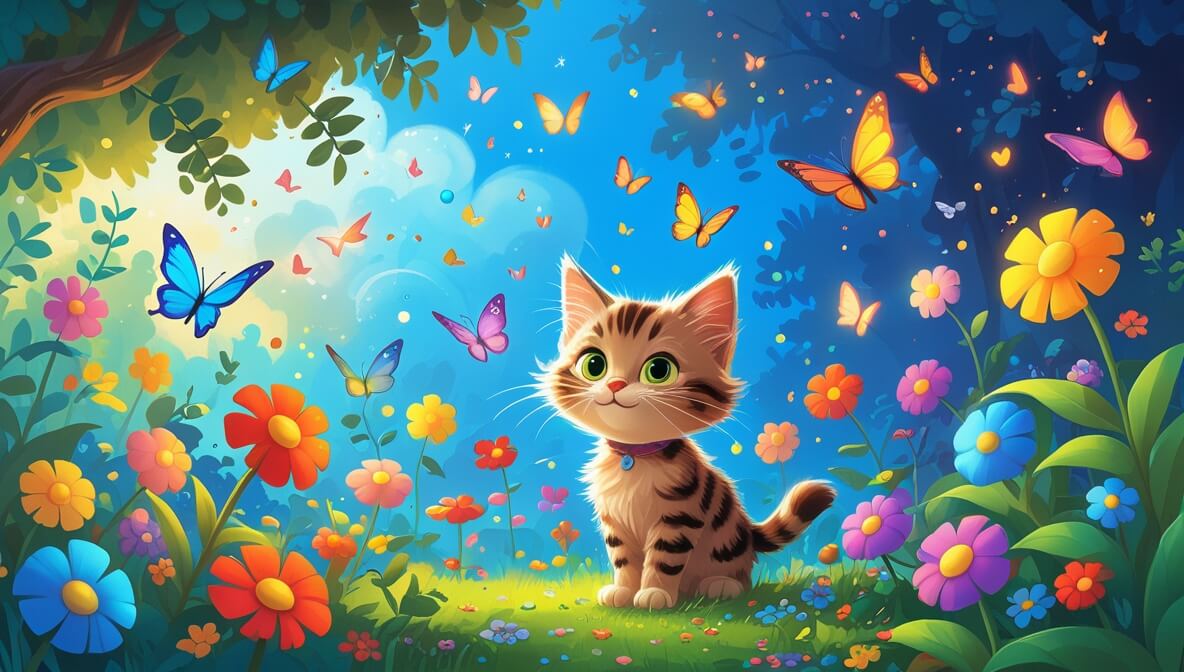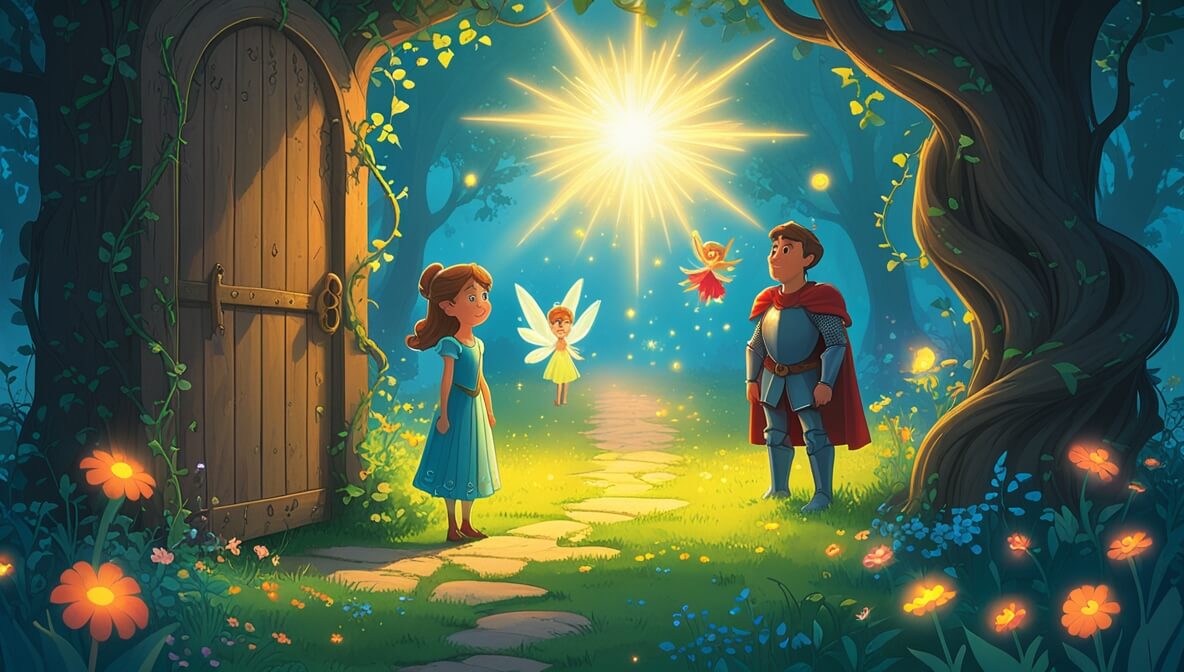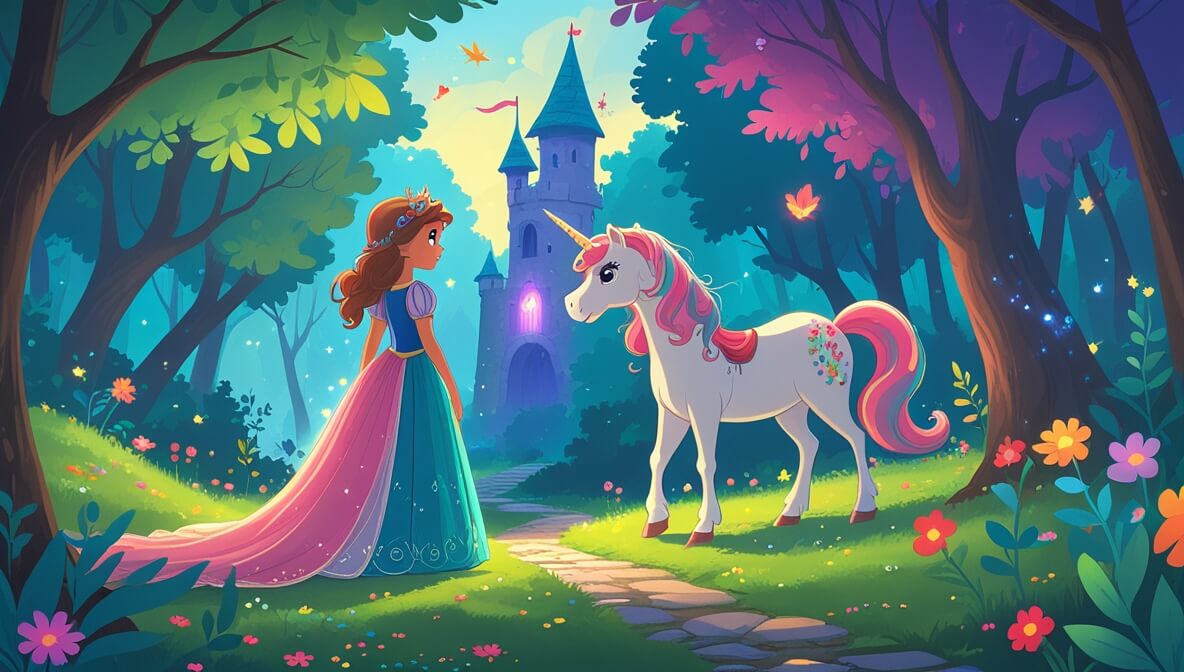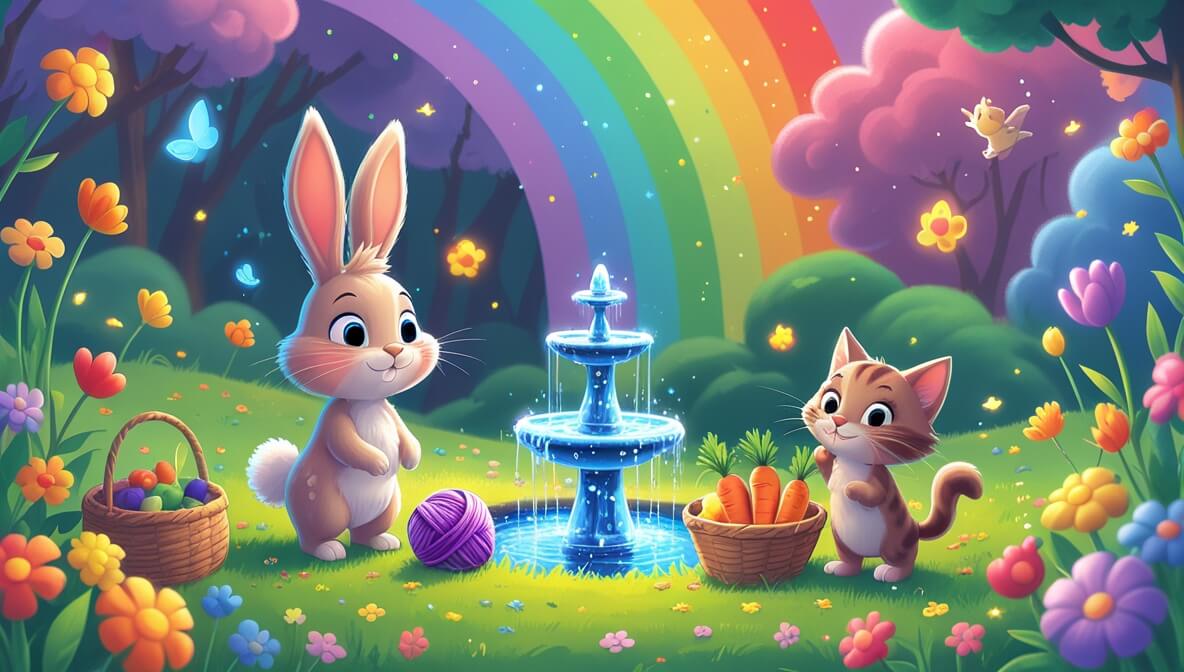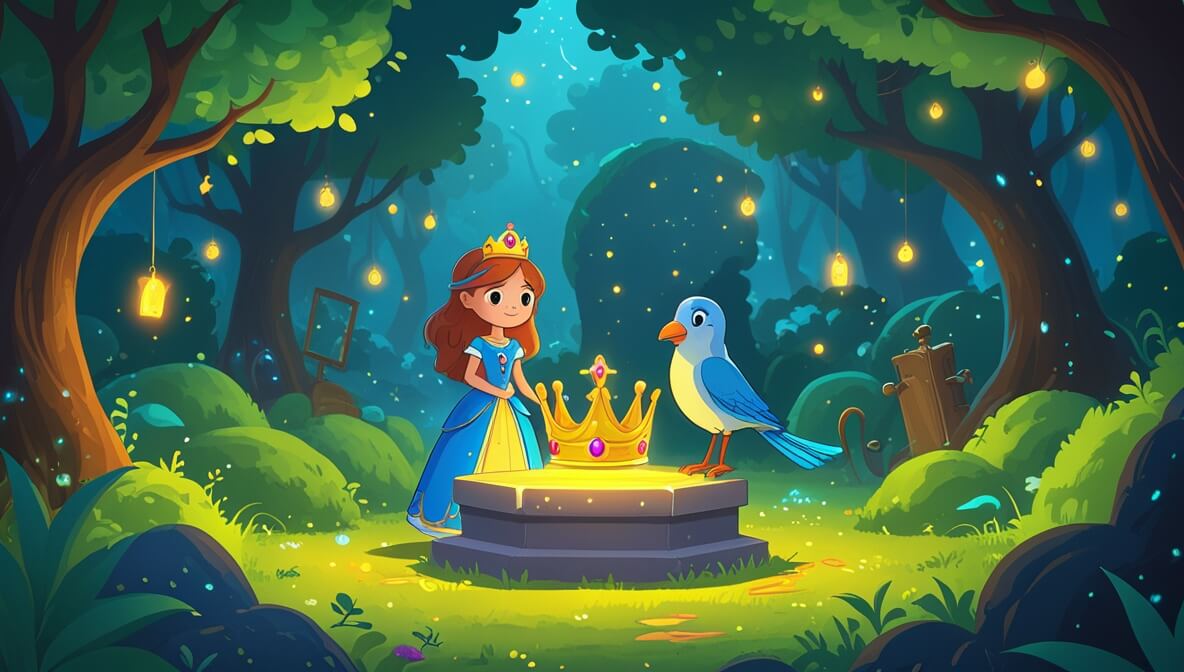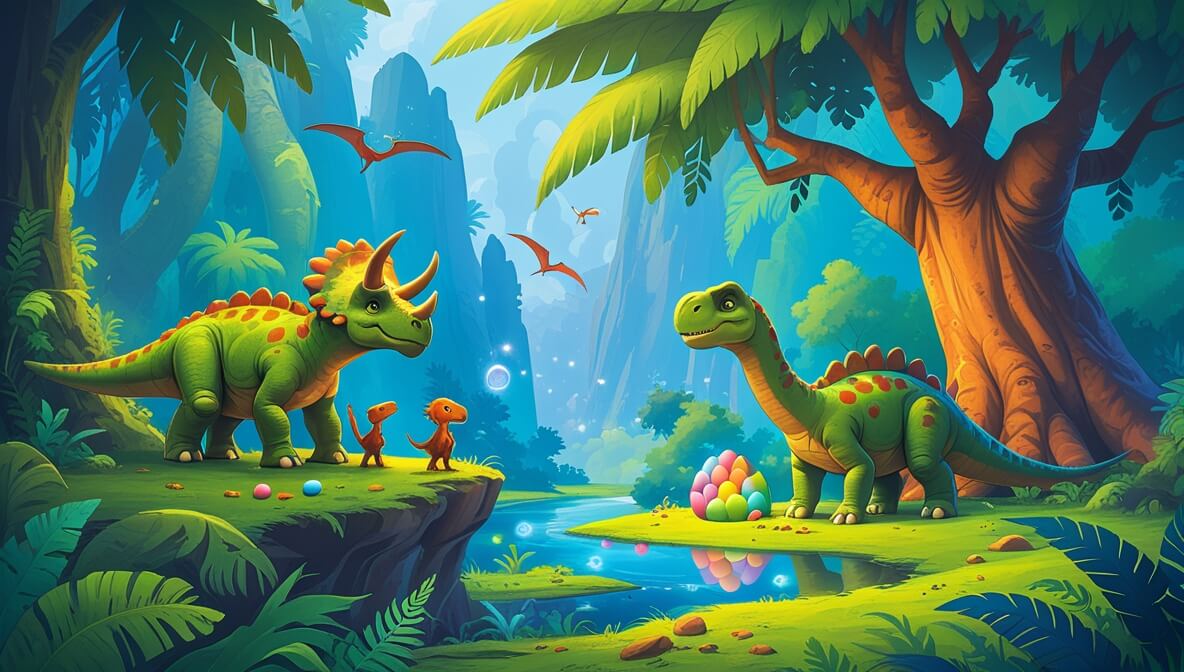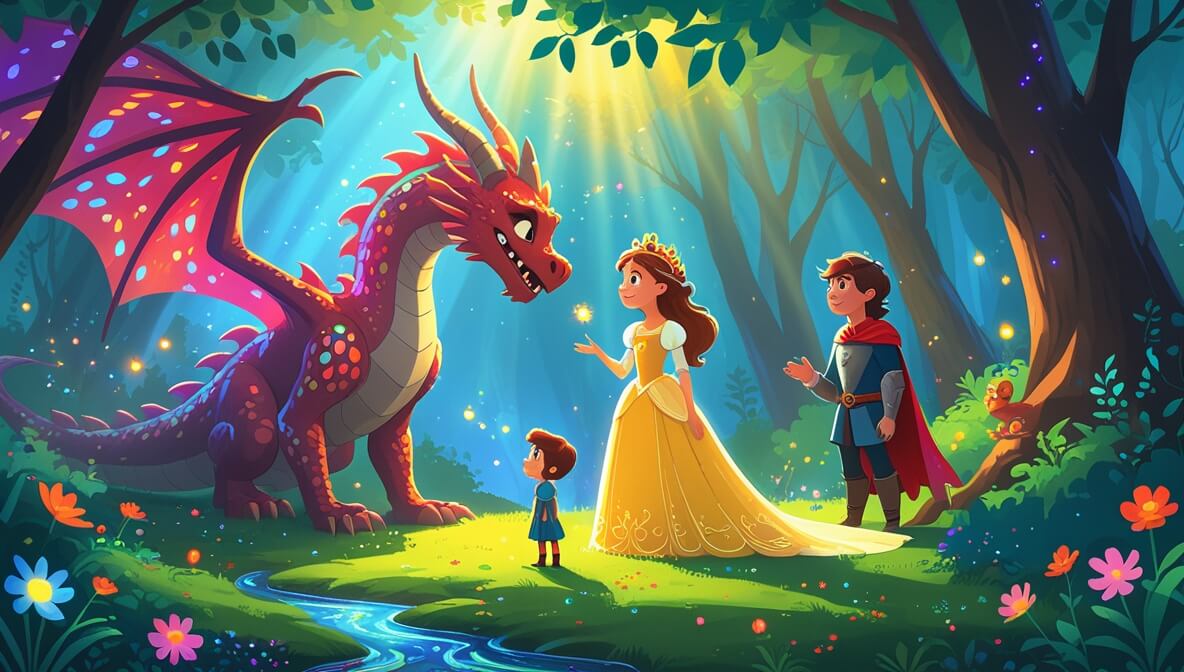A curious kitten named Whiskers discovers a magical garden where flowers giggle and butterflies dance.
Age Recommendation
0 – 4 years
Characters
Characters:
- Whiskers (a curious little kitten who loves to explore)
- Daisy (a giggling flower who loves to chat)
Story
Once upon a time, in a quiet little village, there lived a kitten named Whiskers. Whiskers was not like other kittens. He loved to explore new places and discover new wonders. One sunny afternoon, he found a path he’d never seen before.
The Hidden Pathway
With each step, Whiskers’ tiny paws made the leaves rustle. Soon, he stumbled upon a magical garden. The garden was filled with colorful flowers that giggled and butterflies that danced in the air. Whiskers was amazed!
A Chat with Daisy
Whiskers walked up to a bright yellow flower. “Hello, I’m Whiskers!” he purred. The flower giggled and said, “Hello, Whiskers! I’m Daisy. Welcome to our garden!” Whiskers wagged his tail with joy.
Butterflies and Dreams
Daisy introduced Whiskers to her butterfly friends. The butterflies twirled around him, painting the air with colors. Whiskers felt like he was in a dream. He played with the butterflies until the sun began to set.
Time to Go Home
As the sky turned into a sleepy pink, Whiskers knew it was time to go home. “Thank you, Daisy, and all my new friends,” Whiskers said. Daisy replied, “Visit us again, Whiskers. There’s always magic in our garden!”
The end.
Moral of the Story
Exploration can lead to wonderful discoveries and new friendships. Always be curious and open to meeting new friends.
Questions to Think About
- What do you think Whiskers felt when he first saw the magical garden?
- How did Daisy make Whiskers feel welcome?
- What colors do you think the butterflies were?
- What do you like to explore?
- Would you visit a magical garden? Why?
Do You Know
- Butterflies taste with their feet!
- There are about 400,000 types of flowers in the world!
Word Explorer
- Curious: Wanting to know more about something.
- Giggle: To laugh in a silly way.
- Explore: To look around and find new things.
Emotions in the Story
- Curiosity: When Whiskers found the new path.
- Joy: When Whiskers played with the butterflies.
- Gratitude: When Whiskers thanked his new friends.
Color Your Scene
Imagine the magical garden with bright colors, giggling flowers, and dancing butterflies. Draw Whiskers playing with his new friends, using lots of colors like blue, yellow, and pink to bring your picture to life!
Parents’ Corner
This story encourages curiosity and the joy of exploration. It’s a great opportunity to talk to your child about:
Friendship: Discuss how Whiskers made new friends by being open and kind.
Imagination: Encourage your child to imagine their own magical gardens and what they might find there.
Curiosity: Reinforce the idea that exploring can lead to wonderful discoveries and learning new things.
Appreciation: Talk about saying thank you and showing gratitude to friends.

